Let's dive into the fascinating world of automatic reinforcement and its role in Applied Behavior Analysis (ABA) therapy! 🌟 Automatic reinforcement happens when an action leads to a positive outcome without any social interaction. This concept is super important for creating effective strategies that support learning and independence in children with autism.
Imagine a child discovering that they can play with their favorite toy simply by pressing a button. This moment of joy, all on their own, is a perfect example of automatic reinforcement in action! It’s all about those little victories that make a big difference. By tailoring interventions and conducting ongoing assessments, we can help children thrive and develop crucial skills.
So, if you're a parent navigating this journey, know that you're not alone. We’re here to help you every step of the way! Let’s explore this together and find the best strategies to support your child’s growth.
Understanding the intricate dynamics of automatic reinforcement within Applied Behavior Analysis (ABA) therapy opens up a transformative approach to supporting children with autism. This article explores powerful strategies that leverage automatic reinforcement to enhance therapeutic outcomes, highlighting the importance of tailored interventions and parental involvement.
But how can caregivers effectively navigate the complexities of these techniques to ensure their child’s growth and independence? Delving into this question reveals key insights that can empower families and therapists alike on their collaborative journey toward meaningful progress. Let’s explore this together!
At Rori Care, we’re excited to be at the forefront of integrating strategies into ABA support, where automatic reinforcement is usually related to effective interventions! 🌟 We know that navigating the world of ABA therapy can be challenging, and that’s why we’re here to help. By using advanced technology and data-informed strategies, we customize interventions that are tailored to meet the unique needs of each young person. This not only enhances the overall effectiveness of ABA therapy but also makes the journey smoother for everyone involved.
Imagine this: our innovative use of AI allows us to create automatic progress reports, which means more time—50% more, in fact—for treating young patients. This groundbreaking approach ensures that children receive the most relevant and impactful treatment, as automatic reinforcement is usually related to fostering their growth and independence. Plus, our individualized planning, measurable goals, and evidence-based strategies empower caregivers with the tools they need to support their children’s behavioral goals effectively.
We believe that every child deserves the best, and we’re here to walk alongside you in this journey. Let’s explore this together! If you have any questions or thoughts, we’d love to hear from you. Your experiences matter, and together, we can make a difference!
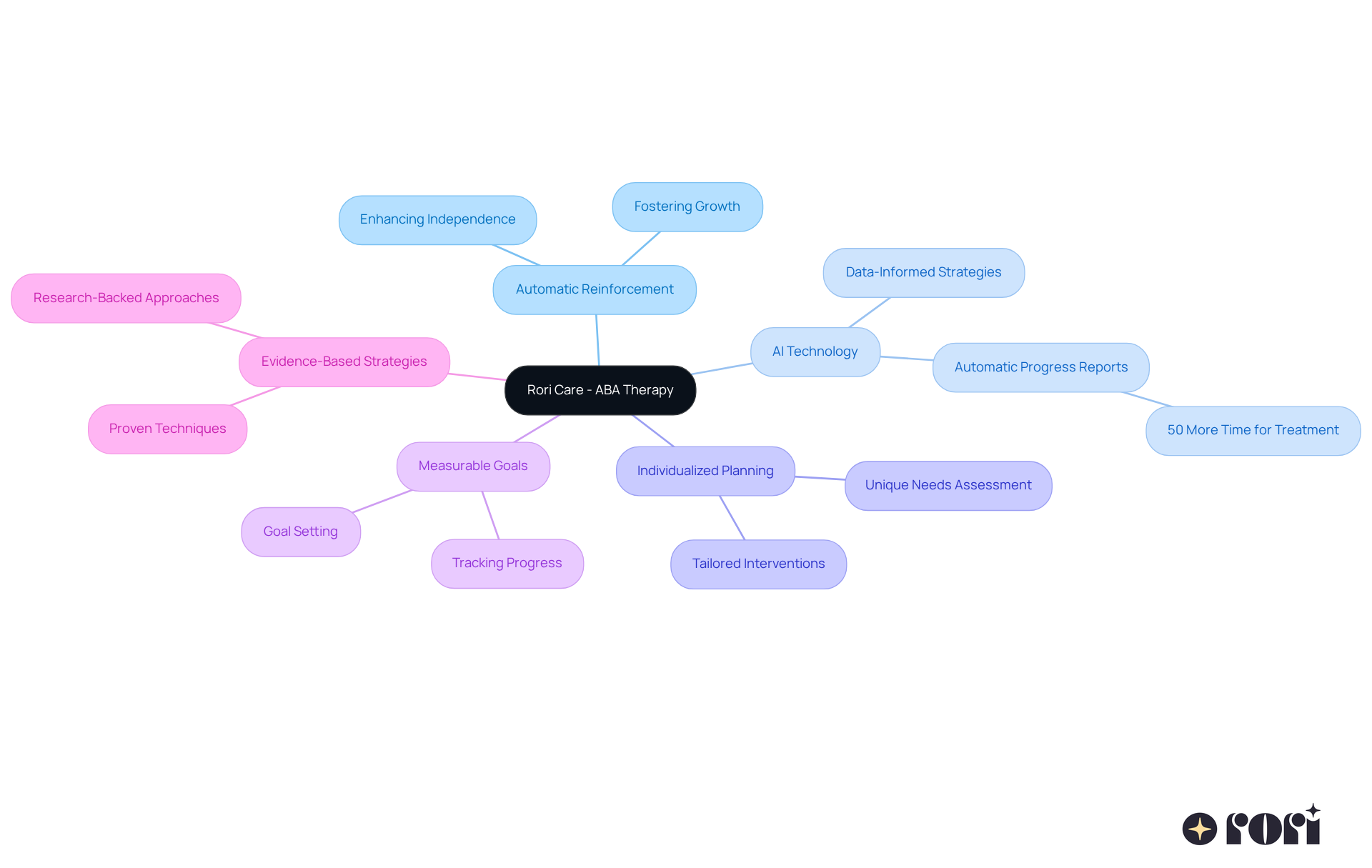
An action that leads to a positive outcome without needing social interaction is a scenario where automatic reinforcement is usually related to. This self-reinforcing mechanism is super important in ABA therapy because it helps build positive habits and skills. By understanding how automatic reinforcement is usually related to specific actions, therapists can create targeted interventions that tap into these behaviors. This not only enhances the learning experience for children with autism but also promotes their independence.
For instance, think about actions like humming or playing with textured items. These can bring intrinsic satisfaction, which strengthens the action itself! At Rori Care, the conduct care engine performs functional conduct analysis for specific actions and skills, generating automatic progress reports for clinicians. This helps in tracking these actions effectively.
By focusing on these internal reinforcement systems, we can tailor strategies that encourage positive conduct growth. This approach enables meaningful progress in various environments. As parents, you can support your child's development by observing these actions and chatting about them with their therapists. Together, they can create personalized plans with clear objectives and evidence-based methods, ensuring that interventions are customized to foster positive growth. Let’s explore this journey together!

Common examples of sensory stimulation actions include hand-flapping, rocking, or humming. These actions often provide sensory pleasure, which automatic reinforcement is usually related to. By recognizing these behaviors, therapists can develop individualized strategies that enhance positive sensory experiences or gently redirect them towards more functional alternatives.
This approach is a crucial part of Applied Behavior Analysis (ABA) treatment, which focuses on each individual and adapts to their unique needs. With proven effectiveness, especially in boosting learning, verbal, and social skills in individuals with autism, ABA intervention emphasizes measurable goals and ongoing assessment.
By applying these evidence-based strategies, therapists can significantly enhance the overall behavior and engagement of the young individual. Let’s explore this together! We’re here to help you every step of the way!
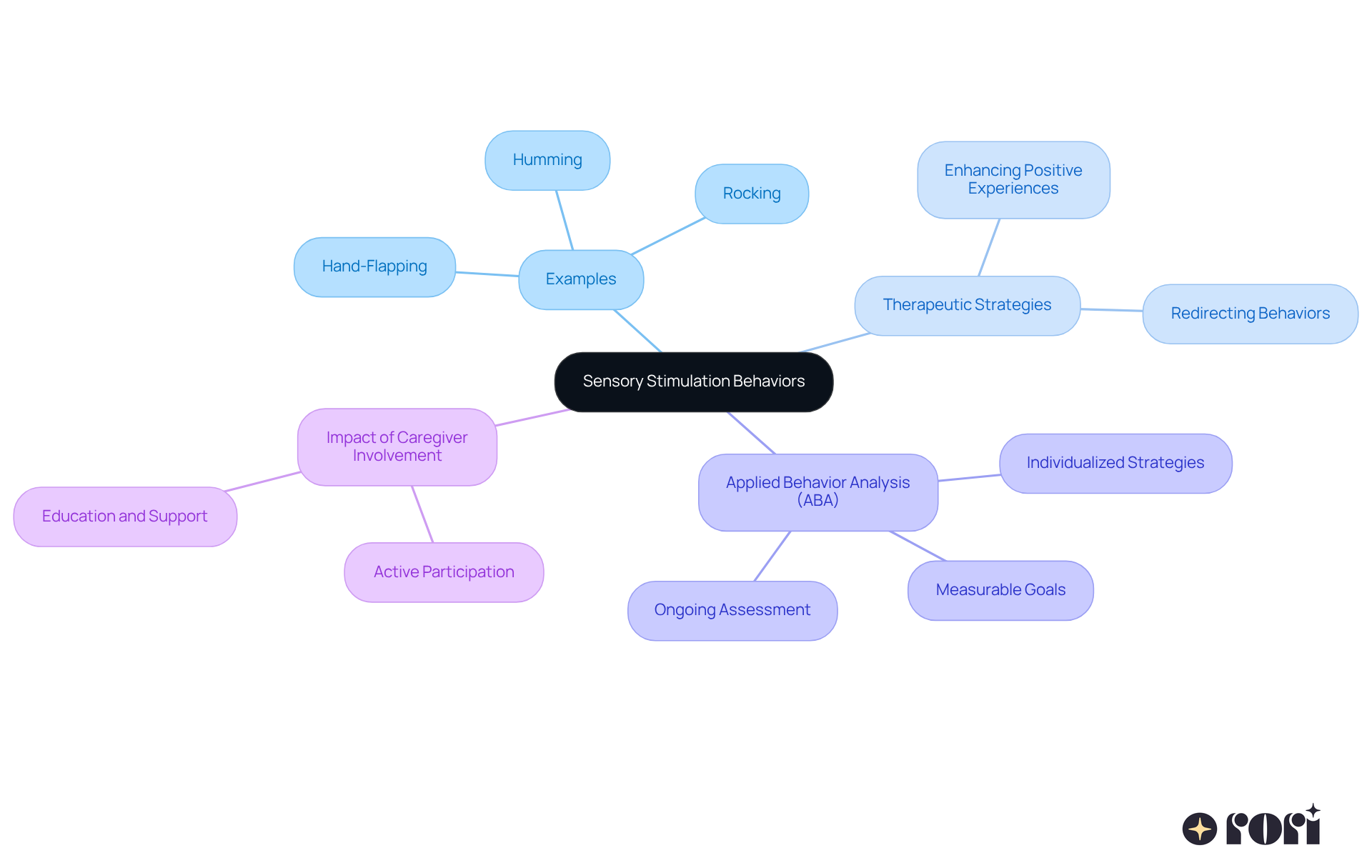
Customized strategies in Applied Behavior Analysis (ABA) therapy are so important for crafting individualized treatment plans that truly meet the unique needs of each young person. At Rori Care, our clinical leadership team is made up of skilled and empathetic professionals who celebrate neurodiversity and work tirelessly every day to support young individuals in reaching their goals. By conducting thorough assessments that take into account sensory preferences, communication styles, and behavioral triggers, our therapists can create interventions that resonate deeply with each individual. This level of personalization not only boosts engagement but also fosters a sense of ownership in the learner's educational journey.
Research shows that personalized methods can significantly enhance outcomes, with ABA interventions achieving a success rate of over 89% in addressing autism spectrum disorder (ASD). Additionally, data reveals that 66% of children referred for ABA support start treatment and remain in services for 12 months, highlighting the importance of customized approaches in keeping families engaged. Clinicians stress that a personalized treatment plan, which considers each child's strengths and challenges, is vital for effective therapy. Ralph Moller notes that such a plan addresses the distinct needs and preferences of the individual, enabling tailored approaches that are most effective for their specific challenges.
Success stories are everywhere, showcasing how customized interventions have led to remarkable improvements in communication, social skills, and overall behavior in individuals with autism. By focusing on the unique requirements of each child, ABA therapy can unlock their potential and inspire lasting positive change. However, it’s important to recognize that fewer than half (46%) of children continue with treatment for 24 months, emphasizing the need for ongoing evaluation and adjustment of care strategies.
Moreover, disparities in access to support services, particularly for African American and Latino youth, underscore the critical role of tailored care in ensuring that all families can benefit from effective solutions. Let’s explore this together and see how we can make a difference!

Monitoring progress in ABA treatment is all about keeping track of how things are going. By collecting and analyzing data systematically, therapists can see what’s working and what might need a little tweak. This ongoing check-in helps ensure that therapy stays in tune with your child’s changing needs, leading to the best possible outcomes.
Did you know that when recommended hours are fully implemented with active caregiver involvement, about 90% of children show significant progress? That’s a pretty encouraging statistic! Specific types of data, like frequency and duration, are super important in making these necessary adjustments.
As Yitz Diena puts it, "Regular data gathering offers objective insights into how effective measures are." This really highlights how crucial continuous evaluation is in the process. Plus, using the ABC (Antecedent-Behavior-Consequence) model gives us a structured way to monitor progress, ensuring strategies are tailored to promote positive behavioral changes.
A qualified analyst creates personalized plans with measurable goals and evidence-based strategies. This approach emphasizes the need for ongoing assessment and adjustments to meet your child’s unique needs. And don’t forget, the care engine updates intervention and skill acquisition plans after each session based on what’s been achieved, making the treatment even more adaptable.
Let’s explore this together! Your involvement can make a world of difference in your child’s progress.

Parental involvement in ABA intervention is so important for achieving the best treatment outcomes! When parents actively join in the treatment process, they help reinforce learned behaviors at home. This consistency is key to ensuring that skills generalize across different environments. Research shows that family involvement not only boosts the effectiveness of interventions but also creates a collaborative atmosphere that greatly supports a young person's development.
Think about it: when parents receive training and support, they can apply strategies effectively, making it easier to weave treatment into daily routines. This cooperative approach is essential! Studies indicate that individuals whose families are engaged in their therapy often show greater advancements in communication abilities, emotional management, and overall growth.
Plus, caregiver education gives families a deeper understanding of ABA principles and strategies. This knowledge empowers them to make informed decisions that positively impact their child’s progress. It can also reduce stress and improve family dynamics, helping caregivers feel more confident in their roles.
By working closely with therapists and applying what they learn through caregiver education, families can tailor interventions to meet their unique needs. This customization optimizes the potential for progress and nurtures a supportive environment that enhances learning.
To boost your engagement, why not set aside some time each week to review treatment objectives with your child? Discussing approaches with their counselor can be a great way to stay connected and involved. Let’s explore this together!
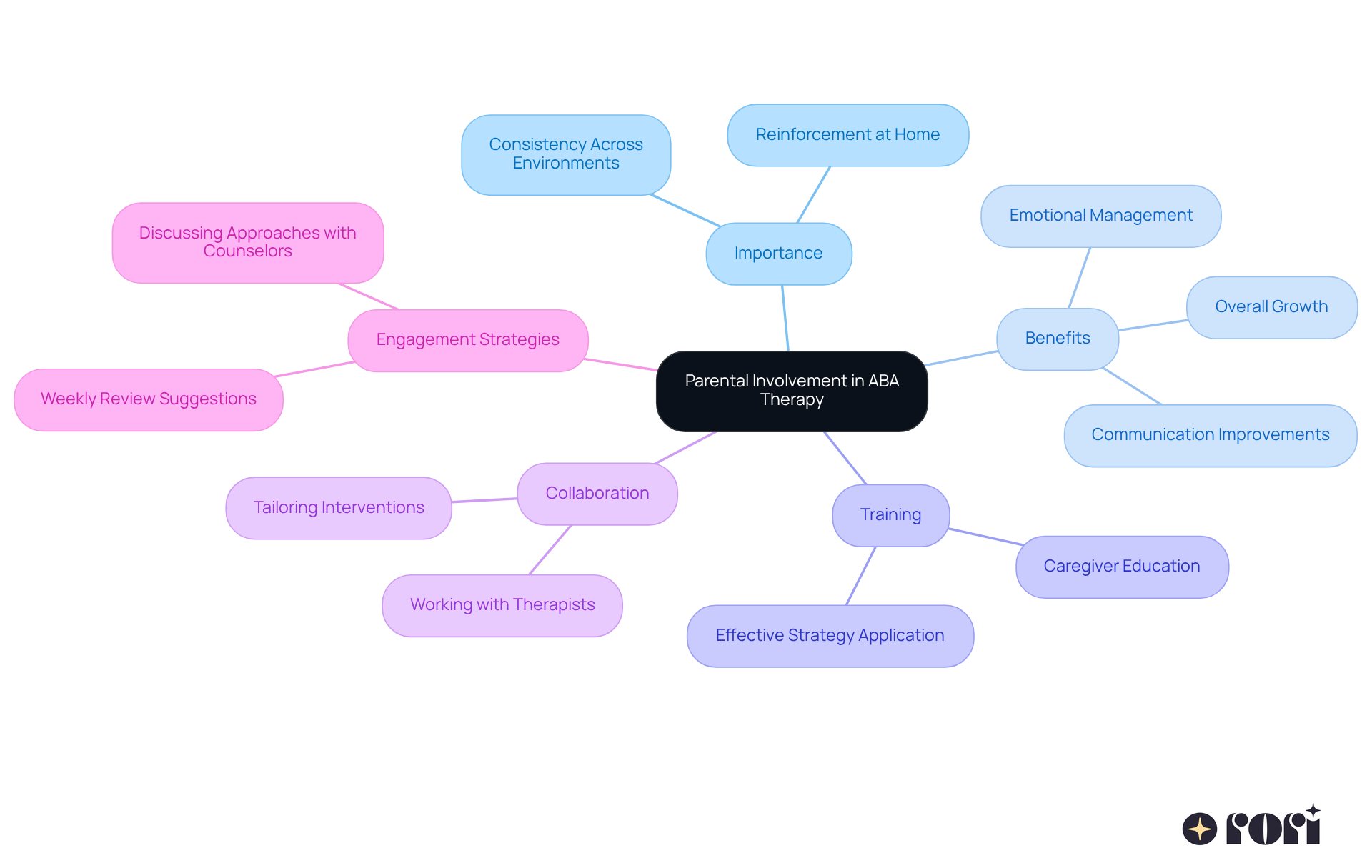
Functional evaluations are such important tools in ABA therapy! They’re designed to uncover the reasons behind certain behaviors. By looking at what happens before, during, and after actions, therapists can pinpoint the triggers that lead to challenging behaviors. Understanding these elements helps in crafting specific strategies that address the root issues, which ultimately leads to more effective behavior changes and skill development.
For instance, case studies show that families who engage in supportive communication during the evaluation process see better outcomes for their children. When young people feel acknowledged and supported, therapists can tailor their approaches to meet individual needs. Plus, recognizing how family dynamics play a role in these assessments can really boost the effectiveness of treatment plans. Positive family interactions are key to therapeutic success!
Using structured communication techniques not only helps in identifying behavior triggers but also strengthens family relationships. This collaborative approach to behavior management ensures that strategies are effective and resonate with the child’s unique situation, paving the way for lasting behavioral improvements. Let’s explore this together!

In Applied Behavior Analysis (ABA) therapy, effective behavioral intervention strategies, such as positive reinforcement, prompting, and modeling, demonstrate that automatic reinforcement is usually related to these techniques. These methods are designed to encourage the behaviors we want to see, as automatic reinforcement is usually related to gently reducing the challenging ones. For instance, positive reinforcement is a key player in ABA, where rewarding desirable behaviors helps to increase their frequency. Research shows that long-term, comprehensive ABA interventions can lead to positive medium to large effects on various developmental aspects, which automatic reinforcement is usually related to, in youth with autism. Isn’t that encouraging?
At Rori Care, we believe in personalized care! Each behavioral plan we create is tailor-made to fit the unique needs, strengths, challenges, and goals of your child. By setting clear, measurable objectives for change and skill development, we establish a transparent benchmark for progress. Our Board Certified Behavior Analysts (BCBAs) use evidence-based strategies grounded in the latest research, ensuring we implement the most effective techniques for positive change.
By combining these tools, our therapists create a structured environment that is usually related to automatic reinforcement, fostering learning and skill development. In ABA treatment, rewards such as verbal praise, tokens, or tangible items are often used, and automatic reinforcement is usually related to reinforcing those positive behavior changes. This approach not only boosts engagement but also encourages self-advocacy and empowerment among children, which is so important for their growth!
And here’s something neat: automatic data collection during clinical sessions allows our clinical team to keep track of progress without interrupting the therapy. All data is securely stored, anonymized, and deleted after analysis, ensuring confidentiality while providing valuable insights for ongoing evaluation and modification of intervention plans. This ongoing evaluation is crucial for adapting strategies to meet the evolving needs of each individual. Plus, when we teach caregivers about ABA principles, it enhances their ability to support their child’s development, leading to even better behavioral outcomes. As a result, integrating these strategies helps children with autism thrive in their environments. Let’s explore this journey together!

Collecting data in ABA intervention is all about keeping track of behaviors in a systematic way. This helps us see how well things are going and make smart choices about treatment. When therapists use this information, they can figure out what's working, spot any trends, and tweak the treatment plans to fit each child’s needs perfectly.
Our behavior care engine is pretty cool! It updates behavior intervention and skill acquisition plans after every session based on the progress made. This means therapy is tailored to each child's unique journey. And here’s something exciting: when the suggested hours are fully implemented with active caregiver involvement, around 90% of kids show significant progress! 🌟
This evidence-based approach really maximizes the chances for positive outcomes. Plus, we take privacy seriously! We follow HIPAA compliance standards by anonymizing and securely handling all data. Parents can even ask for their child's data to be deleted once services are complete, giving you peace of mind.
We’re here to help you every step of the way! If you have questions or want to know more, don’t hesitate to reach out. Let’s explore this together!
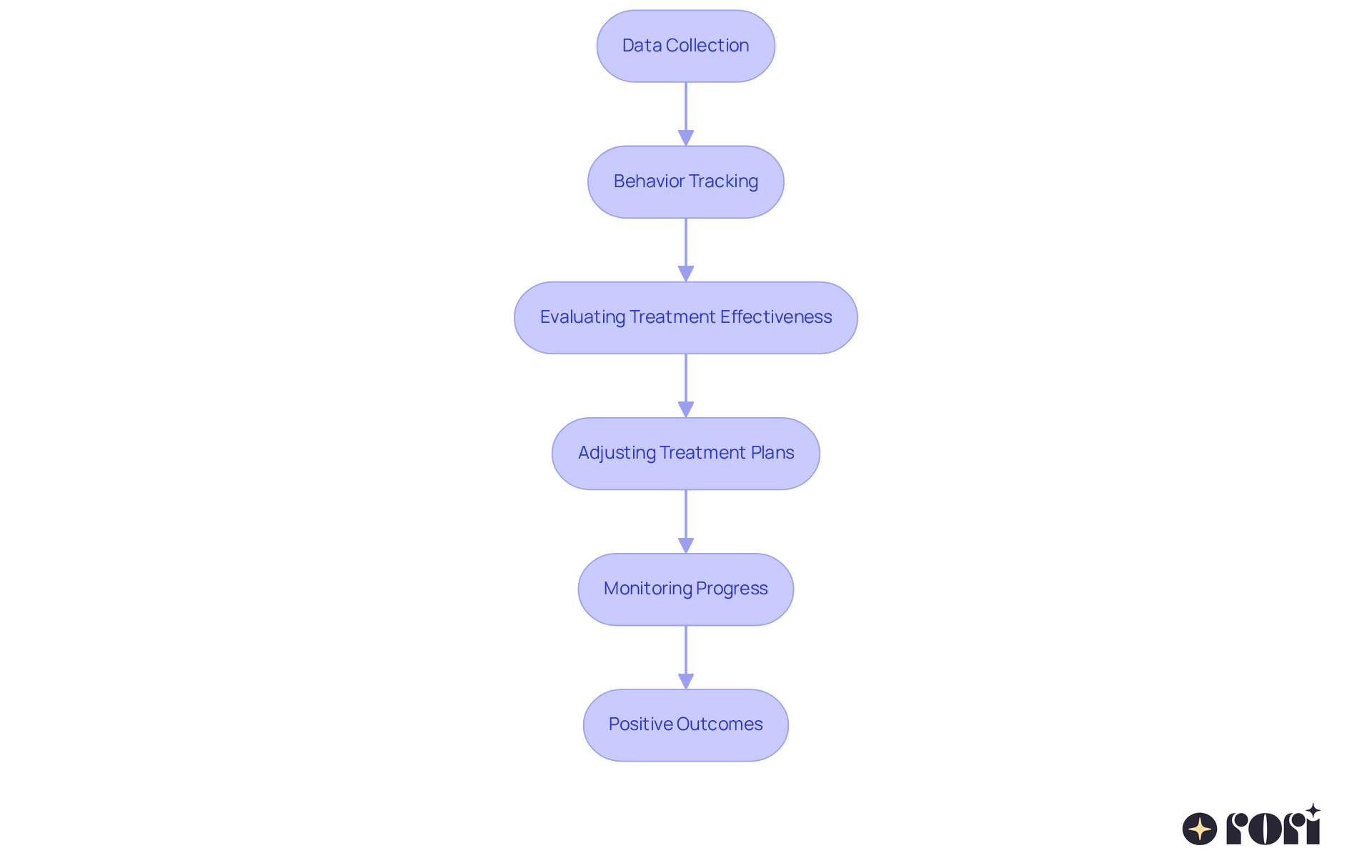
The transformative potential of ABA treatment shines through its ability to empower kids with autism and their families. By providing tailored interventions, ongoing support, and encouraging parental involvement, ABA therapy not only boosts children's skills and independence but also enhances family dynamics.
It's essential to equip caregivers with a deeper understanding of ABA principles and strategies. This knowledge helps them make informed decisions that positively impact their child’s progress, leading to better behavioral outcomes. As caregivers gain confidence in their ability to support their child, the overall family dynamic flourishes, giving every child the chance to thrive.
This holistic approach ensures a lasting impact on their lives and the lives of their families. Let’s explore this journey together!
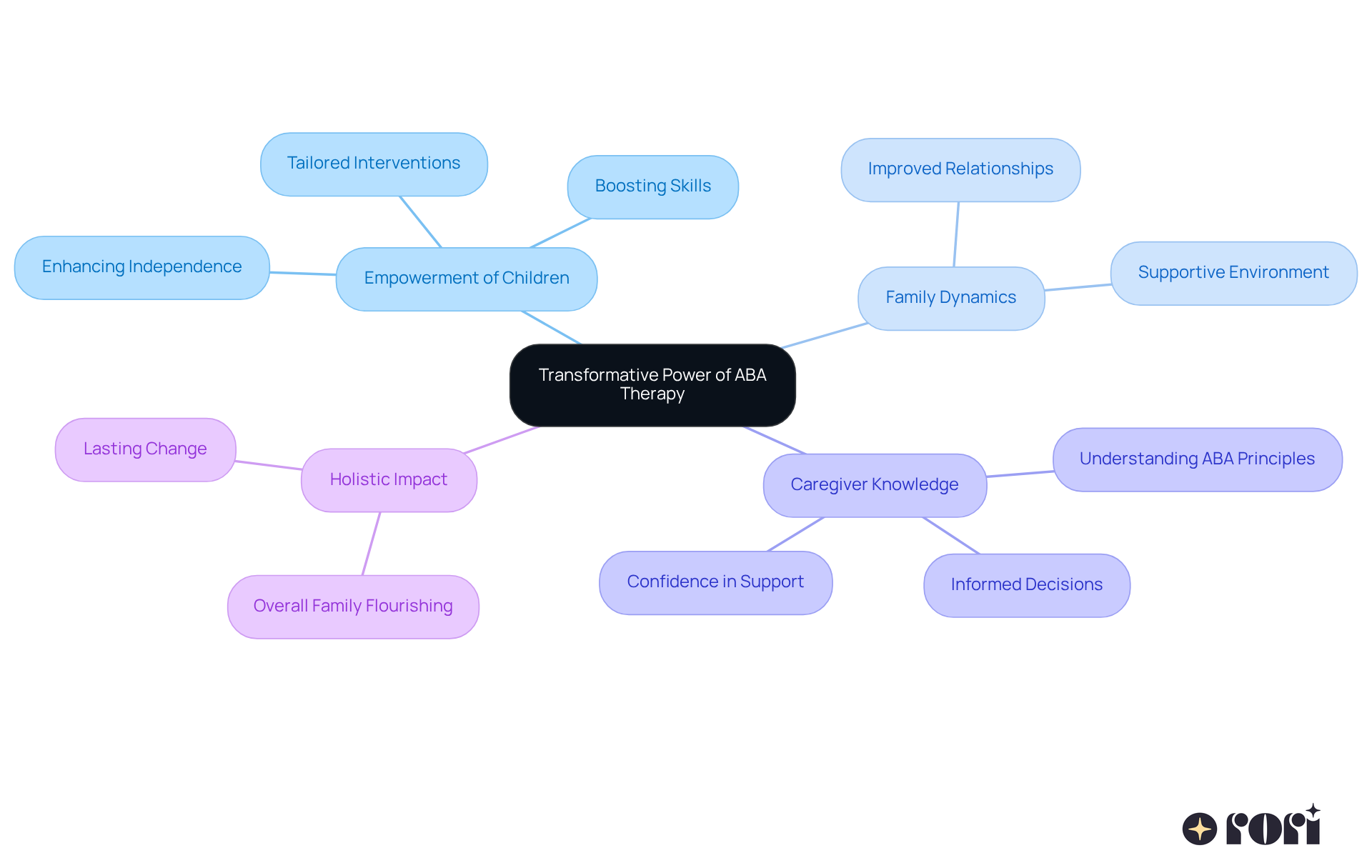
Exploring automatic reinforcement in ABA therapy truly shines a light on how essential it is for encouraging positive behavior and skill development. When practitioners understand and utilize this self-reinforcing mechanism, they can craft targeted interventions that not only enhance learning experiences but also foster independence among children with autism. Plus, integrating technology, personalized strategies, and active parental involvement makes these interventions even more effective, ensuring each child gets the support they need to thrive.
Key insights from the article remind us how vital it is to customize ABA therapy to meet each child's unique needs. Tailored interventions, ongoing progress monitoring, and active family engagement are crucial. Evidence shows that these personalized approaches can lead to significant improvements in communication, social skills, and overall behavior. And let’s not forget the importance of data collection and functional assessments—adapting strategies to each child's evolving needs maximizes the potential for positive outcomes.
The transformative power of ABA therapy goes beyond just individual progress; it enriches family dynamics and empowers caregivers with the knowledge and tools to support their child's development effectively. By nurturing collaboration between therapists and families, we create a supportive environment that fosters growth and independence. Engaging in this journey together not only enhances the lives of children with autism but also inspires lasting change within their families and communities.
Let’s explore this together! Remember, we’re here to help you every step of the way!
What is Rori Care's approach to ABA therapy?
Rori Care integrates automatic reinforcement strategies into ABA therapy, utilizing advanced technology and data-informed strategies to customize interventions for each young person's unique needs.
How does Rori Care enhance the effectiveness of ABA therapy?
By employing innovative AI technology to create automatic progress reports, Rori Care increases the time available for treating young patients by 50%, ensuring that children receive relevant and impactful treatment.
What is automatic reinforcement in the context of ABA therapy?
Automatic reinforcement refers to actions that lead to positive outcomes without needing social interaction, helping to build positive habits and skills in children with autism.
Can you provide examples of behaviors related to automatic reinforcement?
Common examples include humming, hand-flapping, and rocking, which often provide sensory pleasure and intrinsic satisfaction.
How does Rori Care track the effectiveness of interventions?
Rori Care uses a conduct care engine to perform functional conduct analysis for specific actions and skills, generating automatic progress reports to track these actions effectively.
What role do parents play in supporting their child's development in ABA therapy?
Parents can support their child's development by observing sensory stimulation behaviors and discussing them with therapists to create personalized plans with clear objectives and evidence-based methods.
Why is recognizing sensory stimulation behaviors important in ABA therapy?
Recognizing these behaviors allows therapists to develop individualized strategies that enhance positive sensory experiences or gently redirect them towards more functional alternatives, promoting overall engagement and learning.
What outcomes can be expected from using evidence-based strategies in ABA therapy?
Evidence-based strategies can significantly enhance behavior and engagement, particularly in improving learning, verbal, and social skills in individuals with autism.